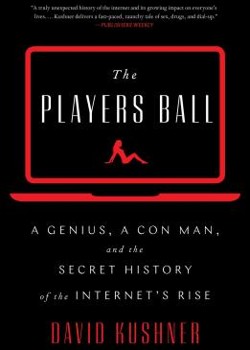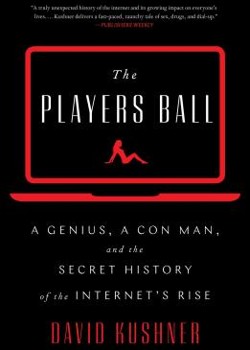
The U.S. Intelligence Community
“Abstinence … Animal rights … Very conservative … Marijuana OK … Children should be given guidelines … Religion guides my life … Make charitable contributions … Would initiate hugs if I wasn’t so shy … Enjoy a good argument … Have to-do lists that seldom get done … Sweet food, baked goods … Artificial or missing limbs … Over 300 pounds … Drag … Exploring my orientation … Women should pay.”
By the fall of 1994, Gary Kremen was working toward launching the first dating site online, Match.com. There was another four-letter word for love, he knew, and it was data, the stuff he would use to match people. No one had done this, so he had to start from scratch, drawing on instinct and his own dating experience.
Generating data—based on the interests of a person in categories such as the ones he was typing out on his PC (“Mice/gerbils or similar … Smooth torso/not-hairy body”)—would be the key to the success of Match; it was what would distinguish electronic dating from all other forms. He could gather data about each client—attributes, interests, desires for mates—and then compare them with other clients to make matches. With a computer and the internet, he could eliminate the inefficiencies of thousands of years of analog dating: the shyness, the missed cues, the posturing. He would provide customers with a questionnaire, generate a series of answers, then pair up daters based on how well their preferences aligned.

Kremen started from his own experience—putting down the attributes that mattered to him: education, style of humor, occupation, and so on. With the help of others, the headings on the list grew—religious identity/observance, behavior/thinking—along with subcategories, including 14 alone under the heading of “Active role in political/social movements” (“Free international trade … gender equality”). Before long, there were more than 75 categories of questions, including one devoted to sex—down to the most specific of interests (including a subcategory of “muscle” fetishes).
But the more he thought about it, the closer he came to an important realization: He wasn’t the customer. In fact, no guys were the customers. While men would be writing the checks for the service, they wouldn’t be doing anything if women weren’t there. Women, then, were his true targets, because, as he put it, “every woman would bring a hundred geeky guys.” Therefore, his goal was clear, but incredibly daunting: He had to make a dating service that was friendly to women, who represented just about 10 percent of those online at the time. According to the latest stats, the typical computer user was unmarried and at a computer for hours upon hours a week, so the opportunity seemed ripe.
To enrich his research into what women would want in such an innovation, Kremen sought out women’s input himself, asking everyone he knew—friends, family, even women he stopped on the street—what qualities they were looking for in a match. It was an essential moment, letting go of his own ego, understanding that the best way to build his market was to enlist people who knew more than him: women.
In his mind, if he could just put himself in their shoes, he could figure out their problems, and give them what they needed. He’d hand over his questionnaire, eager to get their input—only to see them scrunch up their faces and say “Ewwww.” The explicit sexual questions went down with a thud, and the notion that they would use their real names—and photos—seemed clueless. Many didn’t want some random guys to see their pictures online along with their real names, let alone suffer the embarrassment of family and friends finding them. “I don’t want anyone to know my real name,” they’d say. “What if my dad saw it?”
[Read: The lure of online dating is not, in fact, irresistible ]
Kremen went to Peng Ong and Kevin Kunzelman, the men who were developing programming for Match, and had them implement privacy features that would mask a customer’s real email address behind an anonymous one on the service. But there was a bigger problem: He needed a female perspective on his team. He reached out to Fran Maeir, a former classmate from Stanford’s business school. Maeir, a brash mother of two, had always been compelled, albeit warily, by Kremen—“his fanaticism, his energy, his intensity, his competition,” as she put it. When he ran into her at a Stanford event and told her about his new venture, he was just as revved. “We’re bringing classifieds onto the internet,” he told her, and explained that he wanted her to do “gender-based marketing” for Match.
Maeir, who’d been working at Clorox and AAA, jumped at the chance to get in on the new world online as the director of marketing. To her, Kremen’s passion and pioneering spirit felt infectious. And the fact that he was turning over the reins to her felt refreshingly empowering, given the boys’ club she had been used to in business. Maeir showed up to the basement office with pizza and Chinese food and got to work.
One day, an engineer at Match asked her, “What weight categories do you want in the questionnaire?” She arched her brow. “Oh no,” she said. “We’re not asking that.” Women never want to put down their weight, she explained to the dubious guys. Instead, she had them include a category for body type—athletic, slim, tall, and so on. She also cut down Kremen’s intimidating laundry list of questions. Fewer questions enticed more people to register, which meant a larger database and a greater selection of potential matches.
But they had a catch-22. Women weren’t going to join unless there were other women online. Maeir, along with other women brought on to help spread the word, started by recruiting friends. They created a logo—a radiant red heart inside a purple circle—and printed up promotional brochures. To entice people to try out the service, they held promotional events at happy hours in Palo Alto, where the turnout was generally, as the Match marketing executive Alexandra Bailliere put it, “30 guys with pocket protectors and no women in sight.”
Trish McDermott, a marketing executive who’d worked for a matchmaking firm and founded a dating-business trade association, and the others would slip on fake wedding bands to ward off the guys. “Are you interested in meeting new people?” she’d say. “This is a new dating site, like personals in the newspaper but it’s on the internet.” Then she’d get a blank stare as the person would ask, “What’s the internet?”
They weren’t just targeting heterosexual women; they were going for the lesbian, gay, bisexual, and transgender communities. Match’s marketing consultant, Simon Glinsky, pointed out to Kremen how the gay community had already been early adopters online, using bulletin boards and nascent communities such as America Online, CompuServe, and Prodigy for dating. Glinsky related from his own experience, having grown up in Georgia, where meeting other gays was a struggle.
Glinsky went to a gay computer club, where members gathered to talk about AOL and the latest deals at Radio Shack, to explain Match to the crowd. Match held a promotion during a gay skate night at a roller rink in Burlingame, just north of Palo Alto. Bailliere and Glinsky urged skaters to come over and learn more about Match, offering to take their photos with giant digital cameras—which seemed exotic at the time. One by one, the skaters marveled at seeing their faces appear on the computers, and word began to spread.
The San Francisco Examiner ran an early piece on Match, speculating that it could transform the “grand old dating game,” as it put it. “What happens when singles have an alternative to bars,” the article went on, “and don’t just meet based on first impression/physical attractiveness alone?”
[Read: The 5 years that changed dating]
On April 21, 1995, Kremen launched Match.com. Match was a free service, supported by ads, with the idea to charge for subscriptions when it grew. And there was only one way for it to reach that point. “We need more women!” Kremen shouted, storming through their basement office. “Everyone wants to go to a party where there’s women!” he said. “Every woman means 10 guys join!”
Since they didn’t have any women besides their own employees and their handful of friends, they had to create some themselves. Maeir dispatched interns to Usenet groups, where they posted laudatory reviews of Match. When Rolling Stone wanted to run a piece on Match, along with a sample profile of a female member, the women at the office scrambled to invent one. Bailliere drew the short straw, slipped a black jacket over a white T-shirt, and smiled for the camera. Her fake profile, “Sally,” said she was seeking a 25-to-35-year-old guy for an Activities Partner, Short Term Romance, or Long Term Romance to “go hiking and have LOTS of fun.” (Match.com did not respond to a request for comment.)
Having her profile, albeit fake, in a high-profile magazine sent a stream of messages to the email Bailliere had set up. A German in Brazil told her he wanted to use her to re-create Nazi youth camps, and became so obsessive that she grew nervous. “Gary,” she told Kremen, “I don’t know who this person is or if he’s really even in Brazil.” Concerned, the team worked with consultants to develop safety guidelines, such as meeting prospective men from the internet in public places. Maeir had them market Match as “safe, anonymous, and fun.” They also invented self-policing tools for people on Match—such as giving them the ability to block and report others for bad behavior.
The site’s PR executive, McDermott, began hosting a weekly chat session called “Tuesdays With Trish” to dole out dating advice. She billed Match as the dating solution for the emerging online generation. “We’re delaying marriage,” she’d tell reporters. “Many of us moved away from home, and many were just moving from suburbs and starting careers and we lost all that fabric of informal matchmaking when we stay home … You can put a profile up this morning and that night have a response waiting for you.”
This post is adapted from David Kushner’s new book, The Player’s Ball: A Genius, a Con Man, and the Secret History of the Internet’s Rise.

 Ethicoin: Securing the Post-COVID-19 Future
Ethicoin: Securing the Post-COVID-19 Future  A Proclamation on National Crime Victims’ Rights, 2024
A Proclamation on National Crime Victims’ Rights, 2024 
